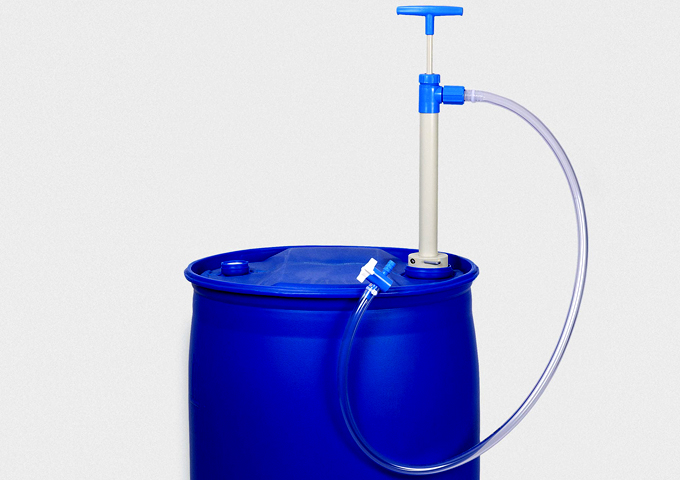A portable pump known as a “drum pump” is made specifically to move fluids from barrels, drums, or storage tanks in a safe and effective manner. Barrell pumps is another name for a drum pump. Depending on the size and kind of container, the media being pushed, the on-site power source, and other factors, a wide range of designs and pump combinations are possible.
How Do Drum Pumps Function?
Many liquids used in manufacturing and processing facilities are shipped in 100- or 200-liter barrels because they are too heavy to be securely tipped over and dumped. Additionally, a lot of enterprises keep their feedstocks in sizable tanks or Intermediate Bulk Containers. The drum pumps enable the secure and efficient movement of media from containers like this.
An immersion tube, a motor part, and a pump section make up a drum pump. On the outside of the container, the motor is positioned on top of the immersion tube. The immersion tube fits through and is frequently sealed to an opening on top of the container. It is as long as the container is deep. Within the lower portion of the immersion, a tube is the pump section. Through the use of an extended shaft that is shielded with a sealed column, the pump is powered from the opposite end of the immersion tube. The pumped fluid enters the discharge port at the motor end of the immersion tube by passing through the sleeve and the tube. Depending on the media to be pumped, several material constructions and tube lengths are offered to accommodate varying container depths.
Extended centrifugal pumps with single, double, as well as multiple impellers are typically used in drum pumps that are used for low and medium viscosity fluids. The liquid is discharged up the tube and out of a port at the top of the immersion tube when the impeller is rotating.
Positive displacement Flux Pumps are better suited for medium and viscous fluids. There is a lot of application for PTFE screw-type lifting compressors for medium viscosity fluids. The transfer of inks, solvents, as well as food items are examples of typical applications. A progressive cavity design is better suited for viscosities up to 100,000cP. The transfer of oils, solvents, adhesives, glycerin, lotions, honey, hair and bath gel are examples of typical applications. There are alternatives for FDA-compliant materials.
What Are A Drum Pump’s Major Characteristics?
In addition to the material of the outer pump tube, a drum pump also has other parts that will come into touch with the fluid being pumped. The wetted parts must be corrosion-resistant and safe to use at operating temperature if the fluid is flammable or combustible. Pump tubes and associated parts are typically made of pure polypropylene, PVDF, CPVC, 316 stainless steel, and polypropylene.
In most settings, a large variety of wetted materials give resistance to chemical corrosion.
The majority of manufacturers provide a selection of interchangeable motors in addition to immersion tubes in a variety of lengths, allowing drum pumps to be customized for varied containers and working conditions. A motor is typically quick and simple to detach and use with a different pump tube. Air-powered motors can be used in place of electrical motors if one is not accessible. Pumps can be disassembled on the spot, and individual components can be changed.
When power sources are unavailable, hand-operated pumps can be employed. Pumps and other equipment on big engines can also be primed with hand pumps.
The size of the container affects the tube’s length. For illustration, a typical 200-litre/45-gallon drum needs a 100-centimetre tube. IBCs and tanks may require longer tubes; 15- and 30-gallon containers have shorter lengths.



